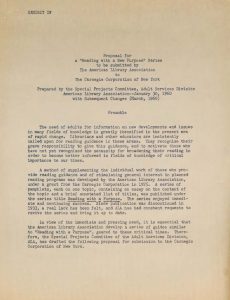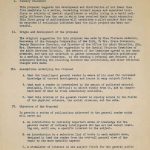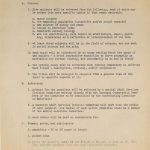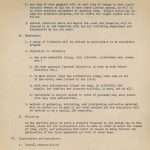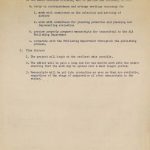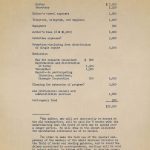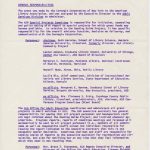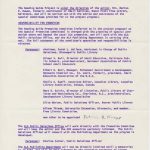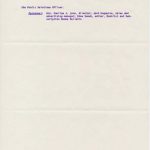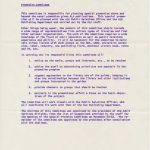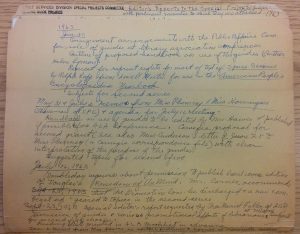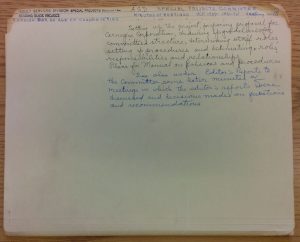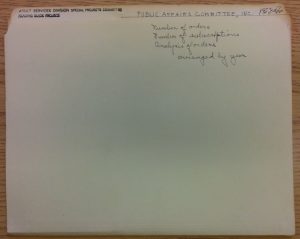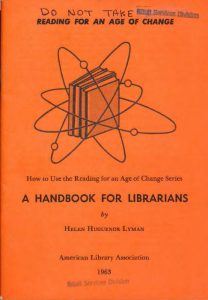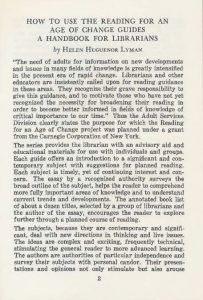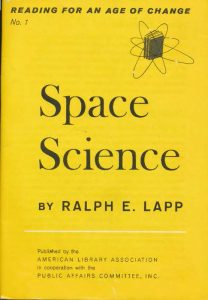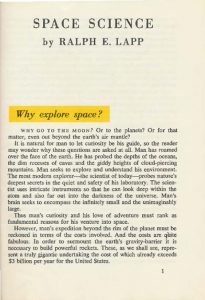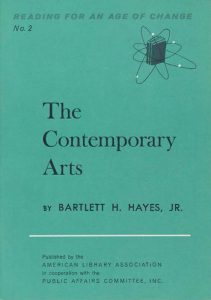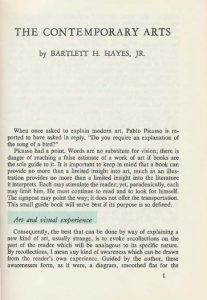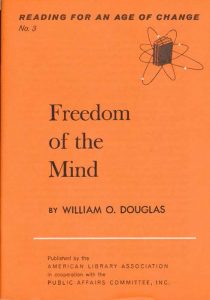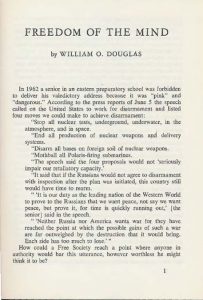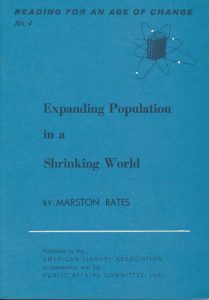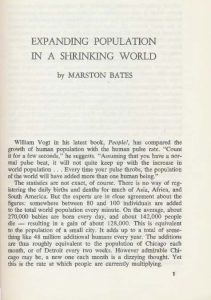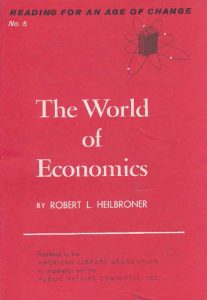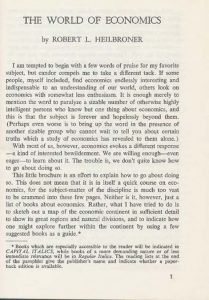From 1962 through 1968, known under the series title Reading for an Age of Change, the American Library Association produced another series of reading guides to support general reading on a variety of topics, for adult readers who completed formal schooling. Each publication is rich in the perspectives of scholarly authorities of its time. Read on to learn more about Reading for an Age of Change!
When performing reference research for historical questions like What was Reading for an Age of Change, some archivists may begin their search with the project or program proposal. According to the folder list for the Reading with a Purpose series, (Record Series 29/3/10), in the final box there is a proposal and a project outline for Reading for an Age of Change. Let’s take a look at those two documents.
Following the success of Reading with a Purpose (Record Series 29/3/10), it was in 1960, when the Adult Services Division Special Projects Committee proposed a new series, later known as Reading for an Age of Change. The original proposal (for the tentatively titled Reading with a New Purpose) was for a 5 pamphlet project, with the option to extend the series at a later date. According to the original proposal, Carnegie Corporation Secretary Miss Florence Anderson first suggested this proposal to A.L.A. Office of Adult Education Director Mrs. Grace Stevenson–who would later successfully lead the project.
The project was intended to guide readers interested in current developments or current issues in many subject fields, with a special emphasis on physical sciences, social sciences, and the arts. Ultimately, this project was to be led by an editor who reported to the Adult Service Division Executive Secretary (now Executive Director) Eleanor Phinney.
Critical to this pilot project was the inclusion of librarians as evaluators to criticize each reading guide’s ability to meet 5 essential criteria:
- Which demographic groups use the pamphlet(s)?
- What is the pamphlet(s) purpose?
- How much of the pamphlet(s) is(are) read?
- To what extent are readers satisfied?
- Which works were most used-by or satisfying-to readers?
From the second document, the project plan, readers learn about the concrete details of what would become Reading for an Age of Change. The ASD Special Projects Committee advised the project and communicated with the Carnegie Corporation too. [1] A Reading Guide Promotion Committee was tasked with promoting the series. [2] More information about the Reading Guide Committee can be found in the Adult Services Division Special Projects File (Record Series 30/2/6).
In the Adult Services Division Special Projects File (Record Series 30/2/6), most of the administrative files can be found too. There is so much information about the Reading for an Age of Change series in this record series that, in fact, some folders even feature handwritten notes from A.L.A. members, as seen in the image above. In this case, the folder’s exterior is a comprehensive list of the documents contained in the folder. While this level of detail is not common across archives (or within an archives), this inscription does provide researchers with additional insight into how important the record creator might have thought of these records. Rather than stuff papers in an untitled folder, the author carefully arranged the files by creation date and wrote a list for future readers to access these historic documents. Further browsing of the record series will yield more examples. In the second image above, the folder creator includes recommendations for future researchers to view other folders for more information. While in the third image, there is another delight for processing archivists: the folder creator includes the arrangement and description information of the folder’s content. (This is quite rare to see).
*Research tip: In addition to marginalia found on some documents, be sure to check all folders for additional notes by the folder’s creator. Sometimes, in archival research, even the records containers can be sources of information for historical research. With a careful eye and some creativity, the possibilities for historical insight could become endless.
Published by the Public Affairs Committee, Inc. and supported by multiple Carnegie Corporation of New York grants, under the series editor, former Adult Services Coordinator and current Enoch Pratt Free librarian Mrs. Marion E. Hawes, the Reading for an Age of Change library guide series produced 10 titles.
In addition to the first five titles, a handbook for librarians was published, as a guide for librarians to provide ideas for in-service training and resources for promoting the program.
In Space Science, by U.S. Physicist Dr. Ralph E. Lapp, the author writes a 38-page introductory essay to space science, with topics ranging from rockets to destinations, before recommending 12 titles for further reading in an additional essay.
In The Contemporary Arts, by educator and art historian Bartlett H. Hayes, Jr., the author writes a 16-page introductory essay to trends in contemporary arts, with topics including art, architecture, abstraction, and modern art, before recommending 14 titles for further reading in an additional essay. This number includes eight pages of black-and-white images of representative art too.
In Freedom of the Mind, by Associate Justice of the U.S. Supreme Court William O. Douglas, the author writes a 37-page introductory essay to the importance of freedom of speech, before recommending 12 titles for further reading in an additional essay.
In Expanding Population in a Shrinking World, by zoologist Dr. Marston Bates, the author writes a 27-page introductory essay to the study of populations and recent issues in population studies, before recommending 12 titles for further reading in an additional essay.
In The World of Economics, by U.S. economist Dr. Robert L. Heilbroner, the author writes a 30-page introductory essay to the study of economics and he cites 34 titles for further reading in the same essay, before he cites an additional 17 titles for initial reading too.
From the sciences to the arts and humanities, the Reading for an Age of Change series was published from 1962 through 1968, with the goal of providing recommended reading on a variety of topics to support the lifelong learning of adults. In this sample of some publications from the series, readers can see both the breadth of topics and the authors’ writing styles too.
Copies Available at Your ALA Archives
Physical copies of Reading for an Age of Change are available for viewing at the ALA Archives. Please view the Record Series 30/2/6 database record entry, for more information.
Got Something to Donate to the Story So Far?
Many people have been involved in the long history of A.L.A. publications and bibliographic work. Do you have any information about Reading for an Age of Change participants, collaborators, publications, or beneficiaries? Please contact us through social media. We and our readers would like to read about it.
[1] The ASD Special Projects Committee included Chair Ruth Warncke, Lester Asheim, Margaret C. Hannigan, Russell Munn, and Lucile Nix, as well as Ex Offico members Margaret E. Monroe and Florence S. Craig.
[2] The Reading Guide Promotion Committee included Chair Sarah L. Wallace, Wilmer V. Bell, Elbert W. Burr, Sheila A. Egoff, Hoyt R. Galvin, Alice Norton, Wilson Thiede, and Patricia B. Knapp.
